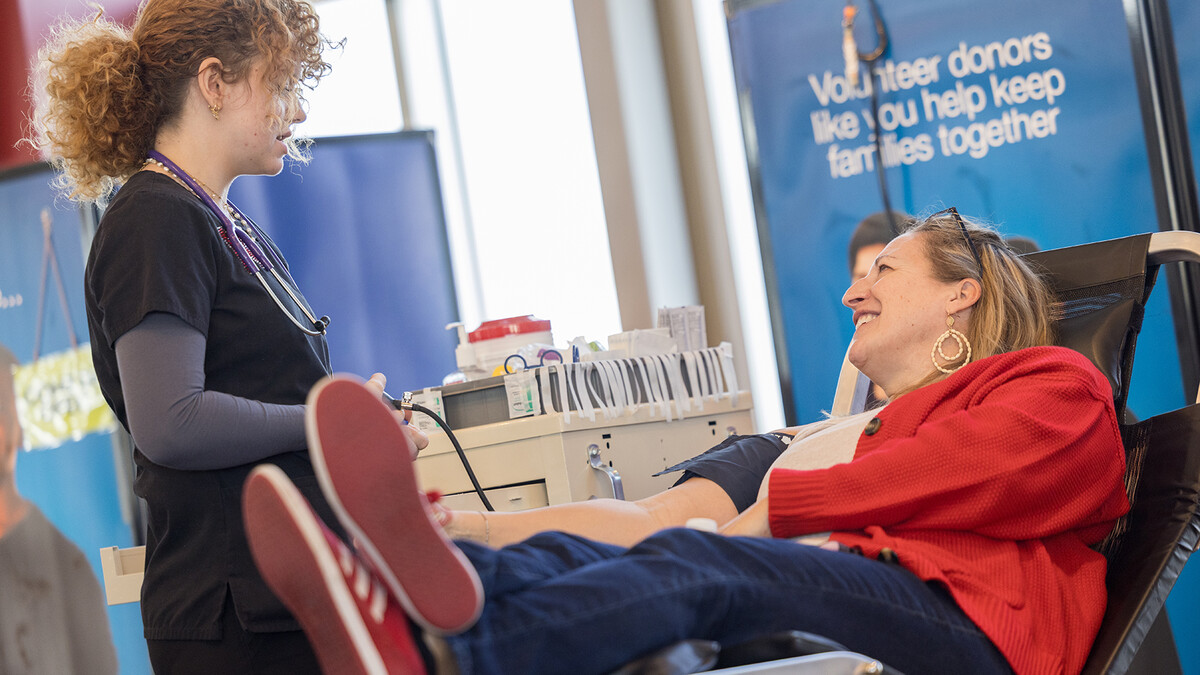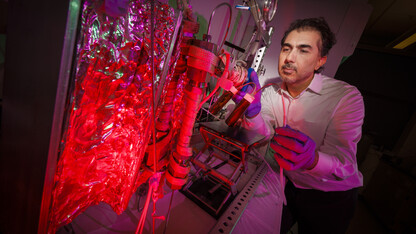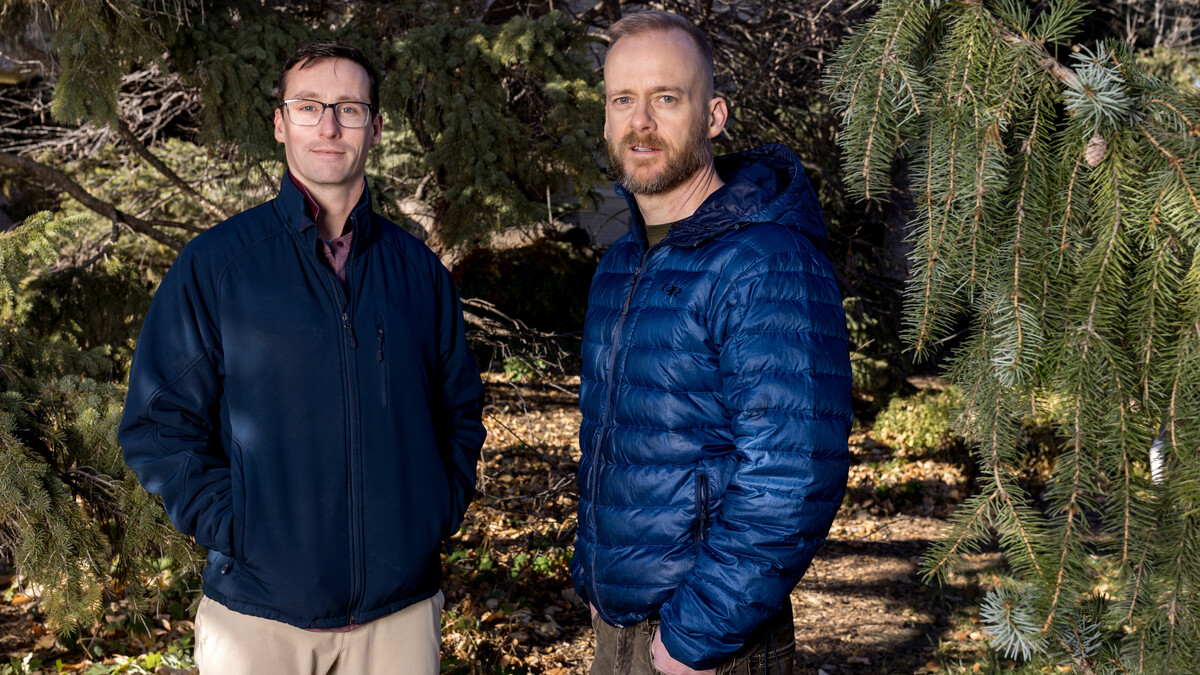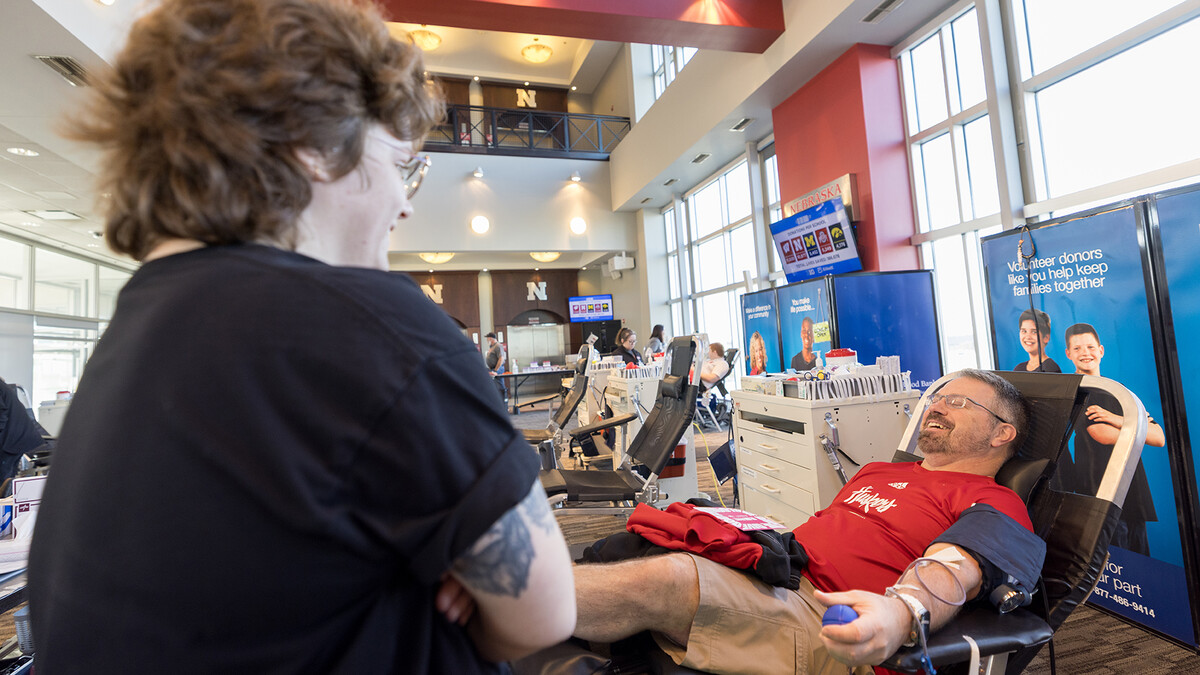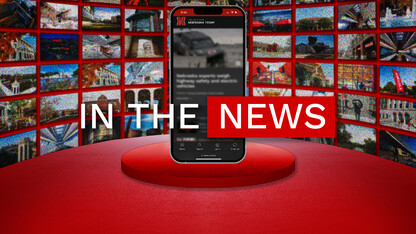
Engineering innovations like conductive concrete and “smart” bandages helped keep the University of Nebraska-Lincoln in the national news during October 2017. Stories about the two inventions were among about 30 national reports featuring Nebraska faculty, staff and students during the month.
National Public Radio’s WHYY in Philadelphia reported Oct. 1 on the electricity-conducting concrete developed by Chris Tuan, engineering. When used for driveways, runways and roadways, the innovative material can de-ice itself. Numerous other National Public Radio outlets, from Baltimore to San Diego, carried the story.
Bandages that can be connected to smartphones and other devices to deliver precise and customized medication dosages were covered by several internet news outlets, including Futurism on Oct. 5, Huffington Post and TechCrunch on Oct. 6, and Forbes on Oct. 8. Ali Tamayol, mechanical and materials engineering, is part of the multi-institution team developing the bandage.
Other coverage:
The Huffington Post cited the late Mark Awakuni-Swetland, anthropology, for his work to preserve the Umonhon native language in an Oct. 13 article about the Omaha’s efforts to teach children their tribal language.
Sue Burzynski Bullard, journalism, wrote about how J-schools are adding social media, curation and analytics to college editing classes for an Oct. 9 MediaShift article that appeared on PBS.org.
The College of Business’s online Master of Business Administration was listed in Princeton Review’s Top 25 programs in an article that was carried Oct. 31 by scores of outlets across the country, including KFVS 12 TV in Cape Girardeau, Missouri.
Popular Science interviewed Joel Cramer, exercise physiology, for an Oct. 2 report on what really happens when you pull a muscle.
Wheeler Winston Dixon, film studies, discussed whether movie producer Bob Weinstein could survive the sexual misconduct scandal that engulfed his brother Harvey in the Oct. 18 Los Angeles Times. Dixon also was quoted by WCCO TVin Minneapolis for a story about movie previews and why they are called “trailers.”
The National Drought Mitigation Center was cited in numerous news articles about drought and fire across the United States. Newsweek used a U.S. Drought Monitor map in an Oct. 10 report on wildfires in Napa Valley in California. Other coverage included outlets in Michigan, New England, Ohio and Wisconsin.
Men’s Fitness featured a University of Nebraska-Lincoln study on Oct. 9 on how lifting heavy weights can lead to quicker strength gains. The study was led by Nathaniel Jenkins, exercise physiology.
Andrew Jewell and Melissa Homestead, English, were mentioned in a lengthy article in The New Yorker about Willa Cather and Red Cloud, Nebraska, where she grew up. The article, first posted online in late September, appeared in the Oct. 2 issue of the magazine.
In an Oct. 30 article, The New York Times mentioned that the Stanford Literary Lab was co-founded by Matthew Jockers, English. The Times also mentioned the International Quilt Study Center for an Oct. 25 article about a wartime quilts exhibit at the American Folk Art Museum.
Rupal Mehta, political science, explained the Iranian nuclear deal – and why it isn’t so great for Iran – in an Oct. 13 op-ed that appeared in Monkey Cage, the Washington Post’s political science blog.
The New York Times interviewed Max Perry Mueller, classics and religious studies for an Oct. 26 article about U.S. Sen. Jeff Flake’s speech announcing he would not seek re-election. Mueller, who studies American religion, said the Arizona lawmaker’s speech included many Mormon overtones.
Josephine Potuto, law, discussed the NCAA’s decision about academic irregularities at the University of North Carolina for the Oct. 16 Inside Higher Ed. Potuto is a former member of the Division I infractions committee.
The Oct. 13 Fayetteville Observer told the story of Jordan Redd, music, a former star baseball player who gave up his sport and left North Carolina to study the French horn. Redd is pursuing his master’s degree in music at Nebraska.
BTN LiveBig featured the work of Heather Richards-Rissetto, anthropology, in an Oct. 14 piece. Richards-Rissetto is leading a team that is creating an immersive 3-D rendering of an ancient Mayan city, to give visitors a virtual reality sense of what the city was once like.
In an Oct. 10 National Public Radio report carried by dozens of outlets nationally, Mario Scalora, psychology, discussed why it’s important to find a motive for the man who took the lives of 58 people in the Oct. 1 mass shooting in Las Vegas. Scalora also was interviewed on the Las Vegas shooting for an Oct. 3 Lincoln Journal Star story that received national distribution through the Associated Press.
Science included Lauren Segal, plant pathology, in an Oct. 6 column asking young scientists about how science can contribute to human rights.
Eric Thompson, Bureau of Business Research, was quoted by The Associated Press in a widely disseminated Oct. 26 article about efforts to cite a chicken processing plant in a small Kansas town. The story appeared in at least 90 outlets acorss the country and was carried by ABC News, CBS News, Fox Business and the New York Daily News, among others.
Frans von der Dunk, space, cyber and telecommunications law, discussed whether space is more like the ocean or a national park in an Oct. 19 article that appeared in Axios.
Bethany Wiles, a junior computer science major, was among 10 females in science, technology, engineering and math featured in an Oct. 10 Huffington Post article on “GirlBoss women” and their advice for women in technology.
Faculty, administration, student and staff appearances in the national media are logged at http://newsroom.unl.edu/inthenews/ If you have additions to this list or suggestions for national news stories, contact Leslie Reed at lreed5@unl.edu or 402-472-2059.

